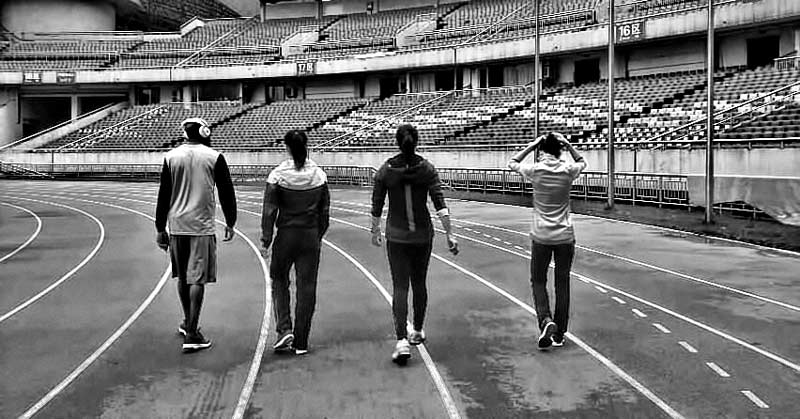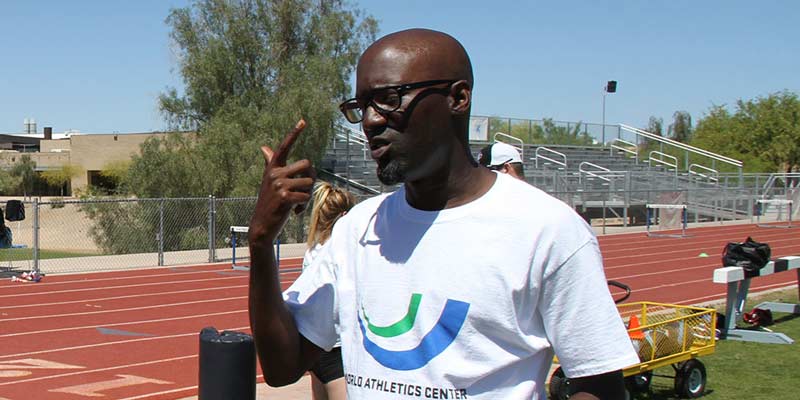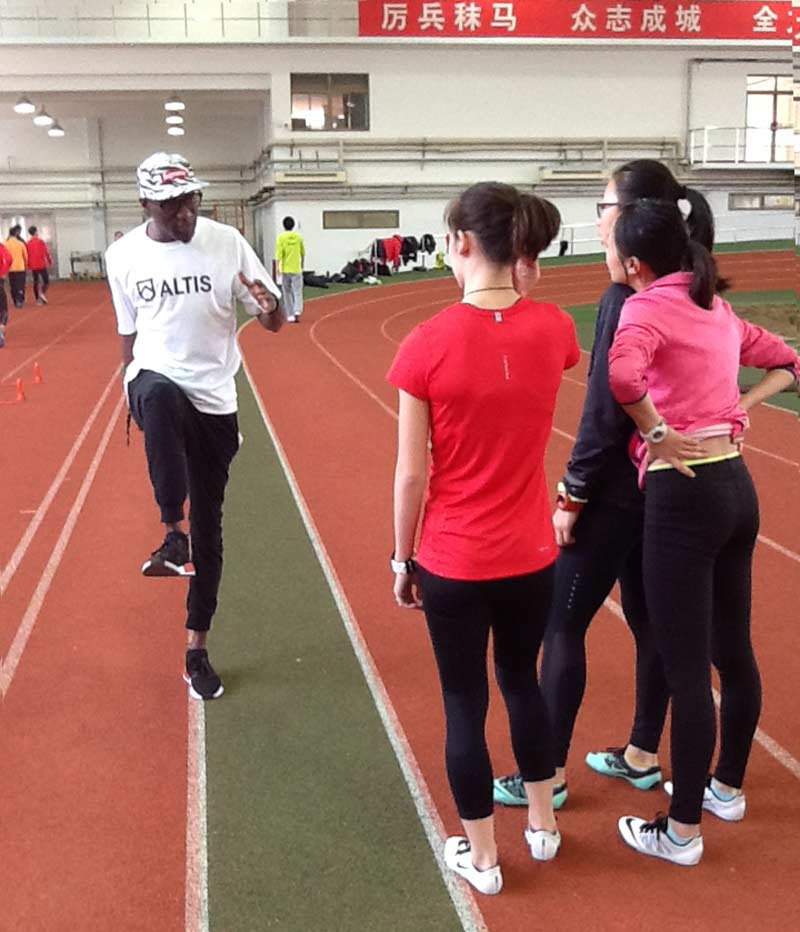ALTIS and Freelap — two of the biggest names in T&F — have come together to celebrate progress in our sport. We hope you enjoy this week’s blog-post. Share if you enjoy it!

By Rohsaan Griffin
Planning a long-range training scheme is a complex task involving multiple layers of progressions, plans, and contingencies. When considered carefully, long range plans can serve as blueprints to mold and direct athletic potential, similar to a roadmap to provide direction between a start and end point. The exact route and speed of travel, however, is something we must be prepared to adjust along the way.
This is the art of coaching. We create the blueprint, or roadmap, while using our judgment to make adjustments to maximize the athlete’s chance to reach planned goals. Nothing is set in stone so firmly that we can project future development of a human being with 100% accuracy.

Figure 1. ALTIS Coach Rohsaan Griffin
From my perspective, we have three key objectives when thinking about a plan:
- Preparation for optimal improvement and performance
- Preparation for a competition peak
- Preparation for the major competition within that peak
There are many possible approaches that could achieve these three outcomes, but I believe we need to be very intrinsic with our approach. In other words, keep everything very related and specific to the goal we are trying to achieve. There is no room for nonessential elements in any training program.
Many coaches, however, believe they must build a base into the training process. This results in lost months of specific skill training. When following these paradigms, are coaches are using common sense in the training process or are they blinded by “book sense”? Too many coaches are married to the paper in this respect. We have to plan our work and work our plan. If something isn’t working well, plan B or plan C should be implemented. We should not only collect the greatest training logs and articles written and try to liberally apply them out of context and think they’re going to work for an individual athlete.
Coaches should tailor training plans unique to each individual with progressions and contingencies. Share on XDuring my time as a competitor some years ago, I was part of one of the greatest training groups ever assembled. It included Donovan Bailey, Obadele Thompson, Bruny Surin, Glenroy Gilbert, Kareem Streete-Thompson, Donovan Powell, Vincent Henderson, and myself. On any given day, each of us trained differently because each of us was catered to individually. I firmly believe a coach should plan this way. Whitewashing a one size fits all plan onto athletes, just because they are training for the same event, is not logical.
Instead, I suggest that plan individualization should be based on the following:
- Analysis of the previous year
- Preparing the body for the imposed training demands
- Global body conditioning using strength, mobility, and endurance
- Modification or consolidation of technique
First, an analysis of the previous year’s performances is critical. This allows us to gauge which elements should remain and which should be removed from the proposed year’s training plan. Since my current group of athletes began their training, I have both added and taken away from their training loads and training menus. This rolling fluctuation occurs because their stages of development have changed. In the two-and-a-half years I’ve been coaching in China, our training has evolved immensely as mastery of landmark skillsets occur.
Second, getting an athlete fit to train at the required intensity is one of the most important factors in the process. And rightly so for many reasons, including the impact on injury prevention. As coaches, we must be both cognizant and respectful of individual timelines rather than blindly push the limits of getting them “there” faster. This process has a very delicate tipping point, and mismanagement and overtraining can lead to unsatisfactory outcomes.
If an athlete is not hitting the times required in training, either adjust the time or adjust the rest interval. If the athlete is laid out on the track after the workout because we did not see indications of an immediate downward spiral during the session, we’ve lost on both ends. We haven’t achieved the objectives of the day’s training and we’ve destroyed the chances of having more productive workouts during the remainder of the week.
Third, considering the body’s conditioning and strengthening in its totality is very important. We can’t overemphasize the training of one group of muscles and neglect the others. A well thought out approach should include every major muscle group in a manner that’s specific to the event’s demands.
When I first arrived in China for ALTIS, I was abruptly thrown into a situation where I had to evaluate a new group of athletes. I had not selected or recruited them. They came from many different groups, bringing with them varying skill sets and exposure to a multitude of coaching philosophies. Needless to say, I had to start from ground zero. My first priority was to start with the most basic, generic training protocols possible so I could determine each athlete’s skill sets and deficiencies.
For example in China, they live and die by the squat, but that’s all they can do. Moreover, poor technical form in the lift often bleeds over to poor posture and form on the track. This leads to injury over the long run. My approach to developing global conditioning is very different. I started the athletes with simple explosive movements such as box jumps, standing bounds, medicine ball throws, kettlebell squats, goblet squats, and hurdle hops for two solid years. This fall was the first time any of my athletes put a bar on their back, and I’m proud to say they remained injury free. They were also much stronger than their counterparts who spent the last two years squatting.

Figure 2. ALTIS Coach Rohsaan Griffin training athletes in China.
Technique, another essential element, requires monitoring and adaptation to maximize performance potential. It’s as essential in the weight room as it is on the track. Poor form in any exercise infects other movement patterns, leading to poor habits, substandard performance, and increased incidences of injury.
I am very particular about this because of my personal experience. I was mentored and trained by coaches with an incredible eye who learned to dissect movement to its most intricate level. We have to be careful to not overcoach and over cue in our quest for movement utopia. The true sign of a great coach is that all of their athletes look essentially the same while running. There will be slight variations, but overall, they look the same.
Three coaches who I highly regard are Tom Tellez, Dan Pfaff, and John Smith. Every athlete coached by these guys looked technically the same. They were clones of each other with different ability levels. The athletes’ movement expression demonstrated a clear coaching system.
How do we get athletes to do this? We can’t just be the coach with the watch that says “Go run” and expect things to magically fall into place. It won’t happen. If it takes breaking down the simplest movement and drilling it repeatedly every day until we see a change, then do so. Once that movement is mastered, move to the next deficiency and work that. Never try to fix everything at once. When a few things click at the same time, mesh them together and reevaluate what’s next.
Finally, the plan must include competition specific conditioning. This is totally different from the general training regimen. In this phase, we have to train for a competitive peak and make any necessary last minute adjustments. After all is said and done, we debrief our athlete, implement an active rest and recovery plan, and start the process again for the following year.
Unfortunately, many coaches don’t treat athletes as individuals and assume they can train every athlete the same. Nothing is further from the truth. Think outside that little piece of paper, don’t get married to the plan, and make time to look up and see the people behind the paper.
Follow these guidelines when you’re planning the training, and I’m certain you will find success along the way.
Please share so others may benefit.
[mashshare]



With the athletes I coach, the number tool in our playbook is their training log. If we run/jump/throw well this weekend, what did we do the past month? If we have a poor performance, same thing, what happened the previous couple of weeks?
There is nothing more vital than the athletes own feedback.